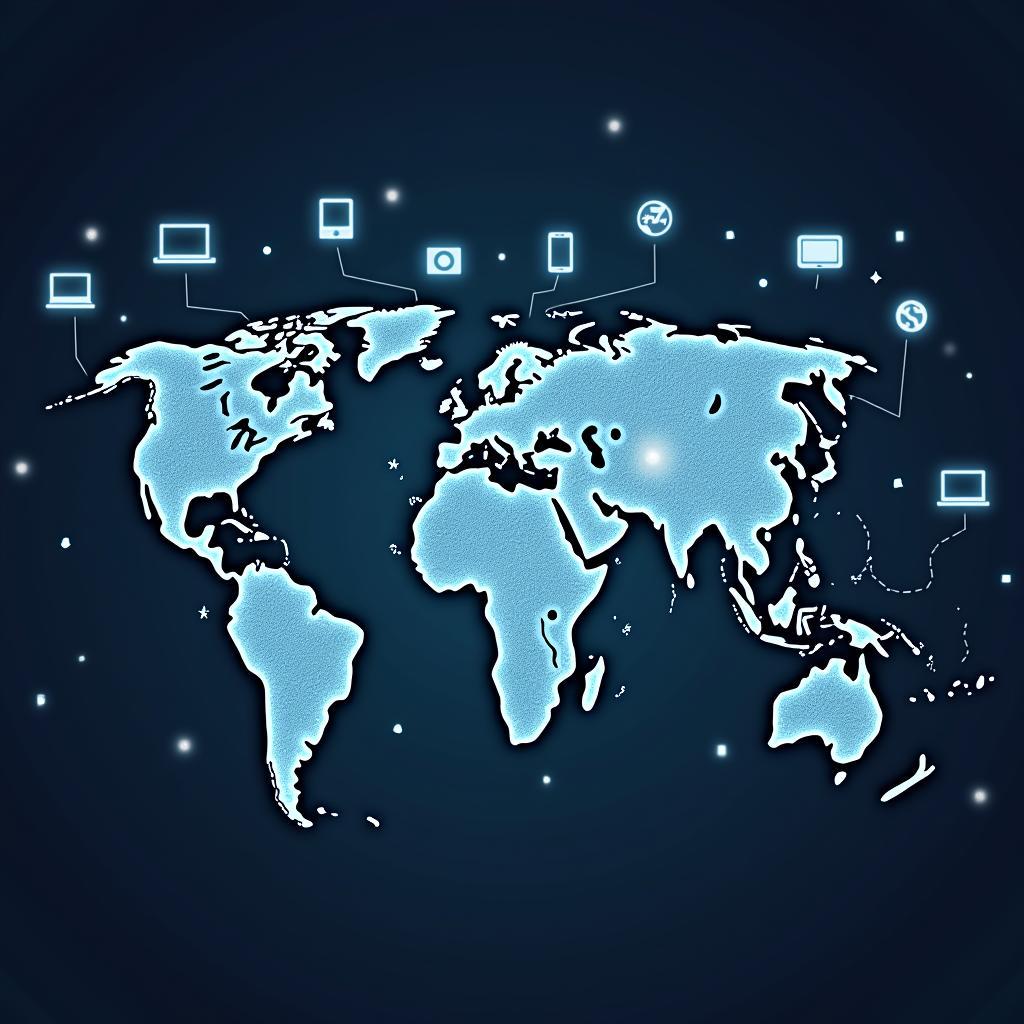Technology and global trade have become increasingly intertwined topics in IELTS Writing Task 2. Based on analysis of past exam questions, this theme appears in approximately 15-20% of Task 2 questions, particularly in questions about economics, business, and societal changes. Similar to how globalization shapes stock market trends, understanding technology’s role in international commerce is crucial for IELTS candidates.
Table Of Contents
Analysis of Common Question Types
The most frequently appearing question format for this topic is:
Some people believe that technological advancement has made international trade easier than ever before. To what extent do you agree or disagree with this statement?
Question Analysis
- Topic: Technology’s influence on international trade
- Task: Agree/Disagree
- Focus: Evaluate how technology facilitates global trade
- Key areas to address: E-commerce, digital payments, communication tools, logistics
 Technology Impact on Global Trade Concept Illustration
Technology Impact on Global Trade Concept Illustration
Band 9 Model Essay
International commerce has undergone a revolutionary transformation due to technological advancements, and I completely agree that modern technology has significantly simplified global trade operations. This essay will examine how digital innovations have revolutionized international business transactions and communication.
Firstly, technology has dramatically streamlined international payment systems and financial transactions. Digital payment platforms and blockchain technology have made cross-border transactions nearly instantaneous and more secure, eliminating many traditional banking obstacles. For instance, international businesses can now process payments in real-time through platforms like SWIFT GPI, significantly reducing the time and complexity previously associated with international money transfers.
Moreover, just as The role of technology in sustainable farming has transformed agriculture, e-commerce platforms have revolutionized how businesses reach global markets. Small enterprises can now easily establish an international presence through online marketplaces, reaching customers worldwide without the need for physical stores in foreign locations. This democratization of international trade has created unprecedented opportunities for businesses of all sizes.
Furthermore, advanced logistics and supply chain management systems have optimized the movement of goods across borders. GPS tracking, automated inventory management, and AI-powered routing systems have enhanced the efficiency and reliability of international shipping. These technological innovations have reduced costs and delivery times while improving transparency throughout the supply chain.
In conclusion, technological advancement has undeniably simplified international trade by digitalizing financial transactions, expanding market access, and improving logistics efficiency. As technology continues to evolve, we can expect even greater facilitation of global commerce in the future.
Band 9 Score Explanation
- Task Response: 9 – Fully addresses all parts with clear position
- Coherence and Cohesion: 9 – Seamless paragraph flow with clear progression
- Lexical Resource: 9 – Sophisticated vocabulary precisely used
- Grammatical Range: 9 – Complex structures used accurately
Band 7 Model Essay
Modern technology has transformed the way international trade operates, and I agree that it has made global commerce more accessible than before. This essay will discuss how technological developments have impacted trade between countries.
Similar to impact of remote working on global financial markets, digital technology has changed how international business is conducted. Online platforms now allow companies to easily find trading partners in other countries. For example, many businesses use websites like Alibaba to connect with suppliers worldwide, making it simpler to source products internationally.
Communication technology has also improved international trade significantly. Video conferencing and instant messaging allow traders to discuss deals with partners across different time zones without traveling. This has reduced costs and saved time for many businesses engaged in international trade.
However, some challenges still exist. Technical problems like internet connectivity issues can disrupt trade operations, and cybersecurity threats pose risks to international transactions. Despite these challenges, the benefits of technology in international trade clearly outweigh the drawbacks.
In conclusion, while some obstacles remain, technological advancement has generally made international trade more efficient and accessible for businesses worldwide.
Band 7 Score Explanation
- Task Response: 7 – Clear position with good development
- Coherence and Cohesion: 7 – Clear progression with some sophisticated linking
- Lexical Resource: 7 – Good range of vocabulary with occasional errors
- Grammatical Range: 7 – Mix of complex and simple structures
Key Vocabulary
- streamlined (adj.) /striːmˈlaɪnd/ – made more efficient and effective
- cross-border transactions (n.) /krɒs ˈbɔːdə træn’zækʃnz/ – business deals between countries
- democratization (n.) /dɪˌmɒkrətaɪˈzeɪʃən/ – making something accessible to everyone
- supply chain management (n.) /səˈplaɪ tʃeɪn ˈmænɪdʒmənt/ – overseeing product flow
- cybersecurity (n.) /ˈsaɪbəsɪˈkjʊərəti/ – computer system protection
For practice, try writing your own essay on how technology affects international trade in areas such as:
- Digital currencies and international payments
- Artificial Intelligence in global trade
- E-commerce platforms and cross-border retail
- Smart contracts and international business agreements
Share your practice essays in the comments for feedback and discussion.


